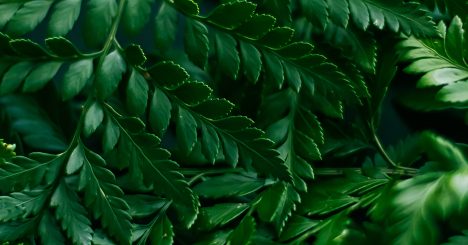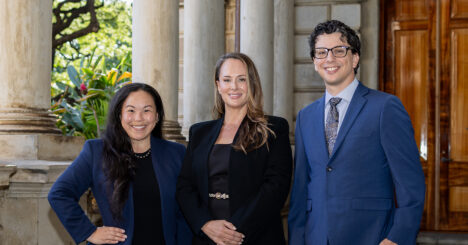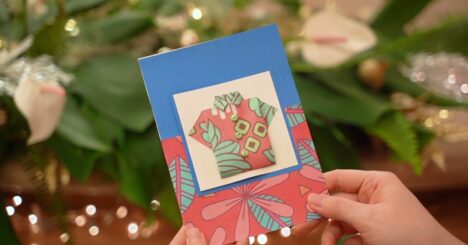The Amy B. H. Greenwell Ethnobotanical Garden lies in the ahupua‘a of Kealakekua on the Big Island, in an area rich with history, culture and community spirit. The Garden is a sort of living museum – ethnobotany is the study of how plants and cultures intersect, and the Garden showcases more than two hundred native and Polynesian-introduced plant species (some of which are rare and endangered) on thirteen rolling acres. Visitors are invited to wander the grounds and discover the ways in which these plants were used by Native Hawaiians for medicinal, subsistence or other cultural purposes.
The Garden was formed as the result of one woman’s generosity and lifelong passion in collaboration with Bishop Museum. Amy Greenwell was an avid botanist and, during her later years, cultivated scores of native plants on her property in Kealakekua, as well as plants that were culturally significant to other non-native and non-Polynesian ethnic groups in Hawai‘i. Upon her passing, she left the land to Bishop Museum with the intent that it be developed into and managed as a Hawaiian ethnobotanical and educational garden. After Bishop Museum conducted further plantings and opened the Garden in 1988, it became a thriving educational and recreational resource, well-loved by local residents and travelers alike.
In 2016, however, the Garden was faced with an uncertain future. After decades of stewardship, Bishop Museum was no longer able to bear the operating costs required to keep the Garden open to the public and the Garden had to be closed down. In response, a dedicated group of volunteers came together to form a nonprofit known as “Friends of Amy B. H. Greenwell Ethnobotanical Garden.” Partners Trever K. Asam and Roy A. Vitousek III assisted the Friends pro bono in incorporating their nonprofit. The Friends’ mission was to find a way to preserve the Garden and reopen it to the public while supporting the Garden through volunteerism, and their efforts paid off. By the beginning of 2019, the Friends had secured commitments to several grants that would allow them to purchase the Garden from Bishop Museum for 1.4 million dollars.
The pending sale was complicated – five parcels were involved, and due to the various state, federal and private grants (including the U.S. Department of Agriculture Community Forest Program (the “CFP”), the State of Hawaii Legacy Land Conservation Program (the “LLCP”), the Atherton Family Foundation and the Cooke Foundation), a number of funding conditions had to be complied with. With support from the firm, partner Rick Kiefer and I provided pro bono assistance to the Friends in navigating this transaction.
Part of the sale necessitated the drafting of two conservation easements in favor of the County of Hawai‘i – one to encumber three “core” parcels at the heart of the Garden and a separate easement to encumber two outlying parcels. Conservation easements are documents that restrict the types of uses allowed on a given property in order to achieve specific conservation objectives. In this case, the conservation easements were meant to ensure that the Garden would continue to be operated for plant and habitat conservation, open space, ethnobotanical, cultural and recreational purposes. Uses such as industrial activities, intensive development, new construction and native plant removal were restricted or prohibited entirely to prevent the land from being used in a manner contrary to its conservation values.
The firm also assisted in drafting the deed conveying the five Garden parcels to the Friends, incorporating and accounting for various provisions required by the LLCP and the USDA Community Forest program. Given the number of interested parties, approval of the conservation easement and deed documents involved multiple rounds of discussion and negotiation with representatives from the CFP, the LLCP, Bishop Museum and the County of Hawai‘i. To add an additional layer of complexity, one of the conservation easements had to be drafted as a “springing” easement – one that was recorded on title but did not “spring” into effect and become binding until fee title to the Garden passed to the Friends. Throughout the process, the Friends remained hard at work in compiling and submitting a demanding set of reports and other documents to comply with funding conditions for the sale.
The intricacies of this transaction were challenging, and equally rewarding. After more than eighty hours of pro bono service, and with the combined efforts and cooperation of each party involved in the transaction, the Friends closed on the deal and acquired the Garden in November 2019. Three months later, the Garden reopened to the public and has been thriving under its new ownership since. We are so pleased that our firm was able to play a small role in returning this community treasure to Kealakekua, and we are thrilled that the Garden will remain protected for the years to come.
This article was published as part of the Spring/Summer 2020 issue of ke kumu, Cades Schutte’s client newsletter. Read the full publication of ke kumu, which explores some of the laws unique to Hawai‘i.





